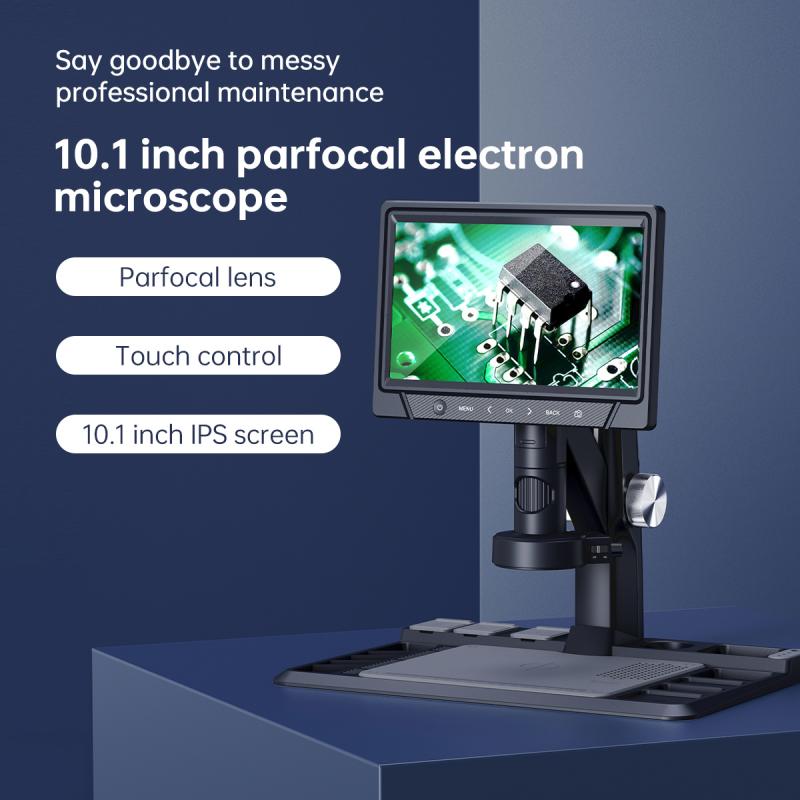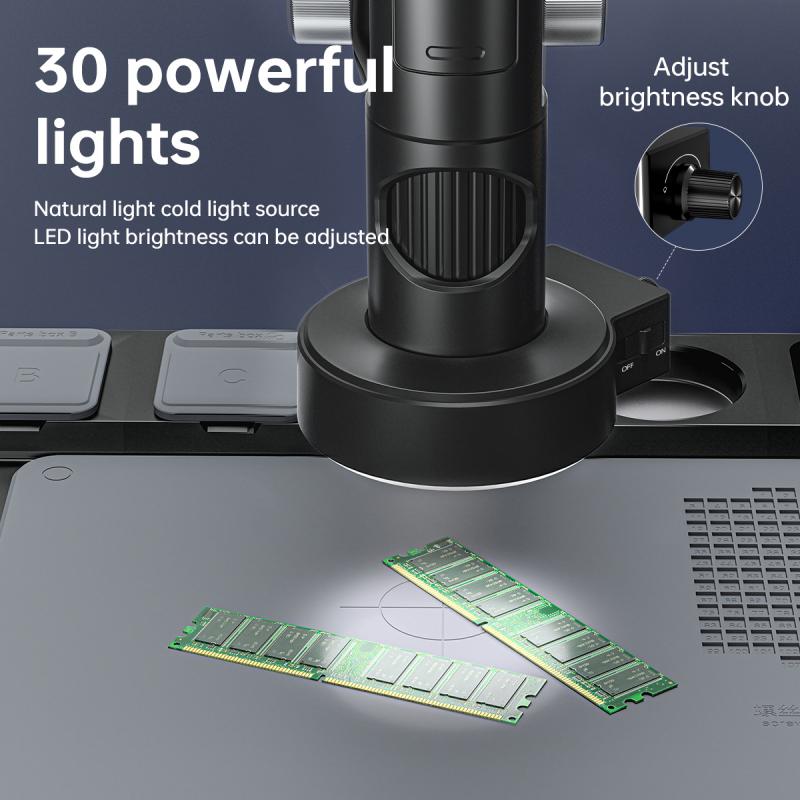What Are The Advantages Of The Electron Microscope ?
The electron microscope has several advantages over traditional light microscopes. Firstly, it has a much higher magnification power, allowing for the observation of much smaller structures and details. This is due to the fact that electrons have a much shorter wavelength than visible light, allowing for higher resolution images. Additionally, electron microscopes can be used to observe samples in much greater detail, as they can be used to create 3D images of samples, allowing for a more complete understanding of their structure. Finally, electron microscopes can be used to observe samples that are not visible under a light microscope, such as viruses and other subcellular structures.
1、 Higher magnification and resolution than optical microscopes
The electron microscope is a powerful tool used in scientific research to study the structure and properties of materials at the atomic and molecular level. One of the main advantages of the electron microscope is its higher magnification and resolution compared to optical microscopes. This is due to the fact that electron microscopes use a beam of electrons instead of light to image the sample, allowing for much higher magnification and resolution.
With the development of advanced electron microscopy techniques, such as scanning transmission electron microscopy (STEM) and high-resolution transmission electron microscopy (HRTEM), it is now possible to image individual atoms and molecules with unprecedented clarity and detail. This has led to many new discoveries in fields such as materials science, nanotechnology, and biology.
Another advantage of the electron microscope is its ability to analyze the chemical composition of materials using techniques such as energy-dispersive X-ray spectroscopy (EDS) and electron energy-loss spectroscopy (EELS). These techniques allow researchers to identify the elements present in a sample and study their chemical bonding and electronic structure.
In recent years, electron microscopy has also become an important tool in the field of cryo-electron microscopy (cryo-EM), which allows researchers to study the structure of biological molecules such as proteins and viruses in their native state. This has led to many breakthroughs in the development of new drugs and therapies for diseases.
Overall, the electron microscope is a powerful tool that has revolutionized our understanding of the world around us. Its high magnification and resolution, combined with advanced analytical techniques, have opened up new avenues of research and discovery in many fields of science and technology.

2、 Ability to visualize subcellular structures and nanomaterials
The electron microscope is a powerful tool that has revolutionized the field of microscopy. It uses a beam of electrons instead of light to visualize the structure of materials at a much higher resolution than traditional light microscopes. The advantages of the electron microscope are numerous, but the most significant advantage is its ability to visualize subcellular structures and nanomaterials.
The electron microscope can magnify objects up to 10 million times, allowing researchers to see structures that are too small to be seen with a light microscope. This has led to significant advances in the study of cell biology, including the discovery of organelles such as mitochondria, ribosomes, and the endoplasmic reticulum. The electron microscope has also been used to study viruses, bacteria, and other microorganisms, providing insights into their structure and function.
In addition to its applications in biology, the electron microscope has also been used to study materials science. It has been used to study the structure of metals, ceramics, and polymers, providing insights into their properties and behavior. The electron microscope has also been used to study nanomaterials, which are materials with dimensions on the nanometer scale. This has led to the development of new materials with unique properties, such as carbon nanotubes and graphene.
The latest point of view on the advantages of the electron microscope is that it is an essential tool for the development of new technologies. It is used in the semiconductor industry to study the structure of computer chips, and in the pharmaceutical industry to develop new drugs. The electron microscope is also used in the field of nanotechnology, where it is used to study the properties of materials at the nanoscale.
In conclusion, the electron microscope is a powerful tool that has revolutionized the field of microscopy. Its ability to visualize subcellular structures and nanomaterials has led to significant advances in the fields of biology and materials science. The latest point of view is that the electron microscope is an essential tool for the development of new technologies, and its applications are likely to continue to expand in the future.

3、 Can image non-biological samples
The electron microscope is a powerful tool that has revolutionized the field of microscopy. It has several advantages over traditional light microscopes, including the ability to image non-biological samples. This is because electron microscopes use a beam of electrons instead of light to create an image, which allows them to penetrate dense materials that would otherwise be opaque to light.
In addition to their ability to image non-biological samples, electron microscopes have several other advantages. They have a much higher resolution than light microscopes, which allows them to see much smaller structures in greater detail. This is because the wavelength of electrons is much smaller than that of light, which means that electron microscopes can resolve structures that are too small to be seen with a light microscope.
Another advantage of electron microscopes is that they can be used to study the internal structure of cells and tissues. This is because electron microscopes can penetrate through the surface of cells and tissues, allowing researchers to see the internal structures in much greater detail than is possible with a light microscope.
Finally, the latest point of view is that electron microscopes are becoming increasingly important in the field of materials science. This is because they can be used to study the structure and properties of materials at the atomic and molecular level, which is essential for developing new materials with specific properties. Overall, the electron microscope is a powerful tool that has many advantages over traditional light microscopes, and its importance is only likely to grow in the future.

4、 Can provide 3D images
One of the main advantages of the electron microscope is its ability to provide high-resolution images of extremely small objects. This is due to the fact that electrons have a much shorter wavelength than visible light, allowing for greater magnification and resolution. This makes it possible to study the structure and composition of materials at the atomic and molecular level, which is essential for many fields of science and technology.
Another advantage of the electron microscope is its ability to provide 3D images. This is achieved through a technique called tomography, which involves taking multiple images of an object from different angles and then reconstructing them into a 3D model. This allows researchers to study the internal structure of objects in great detail, which is particularly useful in fields such as materials science, biology, and nanotechnology.
In recent years, there have been significant advances in electron microscopy technology, including the development of new detectors and imaging techniques. For example, cryo-electron microscopy (cryo-EM) has emerged as a powerful tool for studying the structure of biological molecules, such as proteins and viruses. This technique involves freezing samples in liquid nitrogen and then imaging them at very low temperatures, which helps to preserve their structure and prevent damage from the electron beam.
Overall, the electron microscope is a valuable tool for scientific research and has many advantages over other types of microscopy. With continued advances in technology, it is likely to remain an important tool for many years to come.







































There are no comments for this blog.